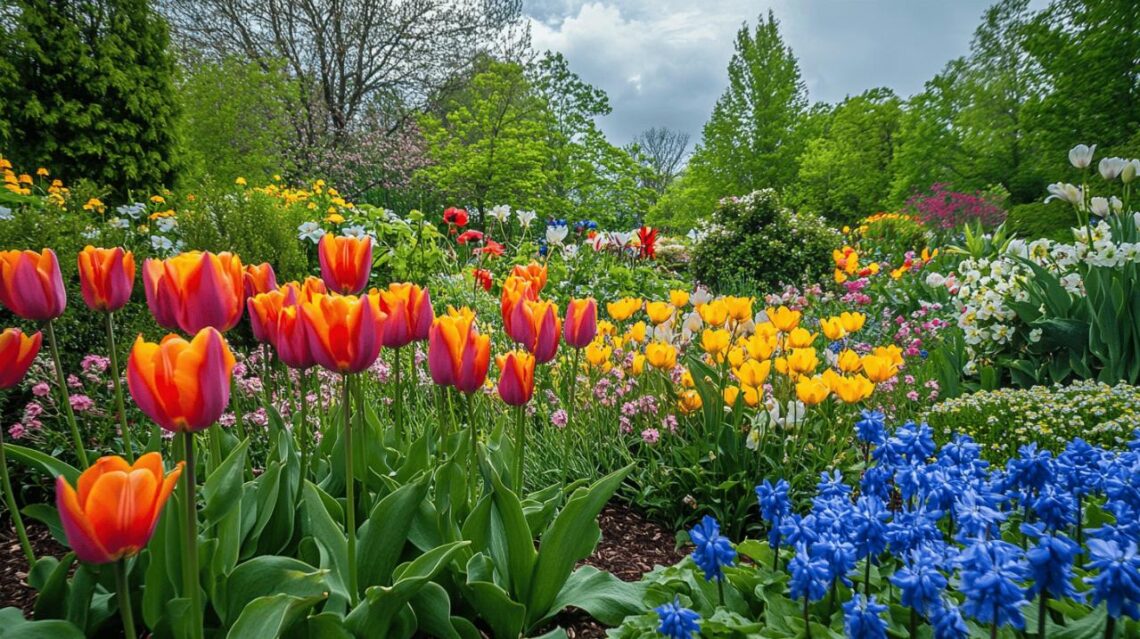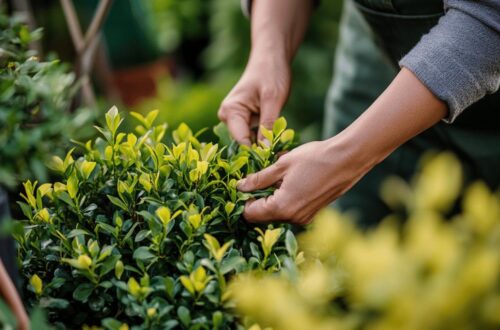
The Ultimate List of Flower Names Starting with the Letter T: Beautiful Blooms for Every Border
Every garden tells a story, and when it comes to blooms whose names begin with the letter T, the narrative is particularly rich. From cheerful spring bulbs to vigorous climbers that transform bare walls into vertical tapestries, these plants offer an impressive range of colours, forms, and textures. Whether you're designing a seaside sanctuary or a traditional herbaceous border, exploring this selection of T-named treasures reveals options for every gardener's ambition and every corner of the British Isles.
Classic garden favourites: tulips and tradescantia
Tulips: spring spectacle in every colour
Few flowers can rival the cheerful impact of tulips when they emerge in springtime borders. These bulbous beauties, known botanically as Tulipa, have been beloved by gardeners for centuries, and their popularity shows no sign of waning. The sheer diversity available is staggering, with blooms in virtually every shade imaginable. Rich reds and sunny yellows create bold statements, whilst soft pinks and creamy whites lend a more romantic air to garden schemes. Some varieties even showcase intricate bi-colour patterns that add an extra layer of visual interest. Growing typically between ten and twenty-four inches tall, tulips fit comfortably into both formal bedding displays and cottage-style plantings. Though not particularly fragrant, their visual drama more than compensates. Many varieties also make excellent cut flowers, bringing that springtime cheer indoors. The symbolism associated with tulips centres on love and affection, making them perfect for commemorating special occasions. When planted in generous drifts, tulips create sweeping rivers of colour that announce the arrival of warmer days with unmistakable enthusiasm.
Tradescantia: the charming spiderwort for borders
For those seeking perennials that deliver reliable colour year after year, Tradescantia, commonly known as spiderwort, deserves serious consideration. These herbaceous plants produce delightful blooms in shades of purple, pink, and white, creating gentle splashes of colour throughout the growing season. Tradescantia virginiana is particularly dependable, establishing itself readily in borders and requiring minimal fuss once settled. The three-petalled flowers open in succession, ensuring a prolonged display that extends well beyond what many spring bulbs can offer. The foliage, whilst not evergreen, provides attractive texture during the growing months. Spiderwort thrives in both sun and partial shade, making it a versatile choice for gardens where light levels vary. Garden centres typically stock several cultivars, allowing gardeners to select precisely the colour palette that complements their existing planting schemes. Once established, these plants form substantial clumps that can be divided to extend your collection or share with fellow enthusiasts. Their relaxed habit suits informal borders particularly well, though they also integrate beautifully into more structured designs.
Coastal Champions: Thrift and Tamarisk for Seaside Gardens
Thrift: compact evergreen cushions of colour
Gardeners blessed with coastal plots will find a steadfast ally in thrift, also known by its botanical name Armeria maritima or the charming common name sea pink. This tough little perennial forms neat, compact cushions of grassy evergreen leaves that provide year-round structure and interest. In spring and summer, the plant erupts with pom-pom like blooms held aloft on wiry stems, typically in shades of pink or white. Growing just six to twelve inches high, thrift excels in rock gardens, edging schemes, or anywhere that requires a low-growing plant with considerable character. Its native habitat includes coastal cliffs and salt marshes, which explains its remarkable tolerance for challenging conditions. Exposed sites, poor soils, and salt-laden winds that would devastate less resilient plants barely trouble thrift. The evergreen nature of the foliage means that even in the depths of winter, these plants continue to earn their place in the garden. When planted en masse, thrift creates undulating carpets of colour that soften hard edges and fill gaps with grace. The modest height ensures that taller companions behind are never obscured, making thrift an excellent team player in mixed plantings.
Tamarisk: feathery pink blooms for windswept locations
Where gardens face persistent coastal winds and salt spray, Tamarix, commonly called tamarisk, offers both beauty and resilience. This shrub or small tree is characterised by its delicate, feathery foliage and masses of soft pink blooms that create an airy, romantic effect. The flowers typically appear in summer, transforming the plant into a cloud of pale colour that seems to float above the landscape. Tamarisk's architectural form provides valuable structure in seaside gardens where many other woody plants struggle to survive. The fine texture of the foliage contrasts beautifully with bolder-leaved neighbours, creating dynamic visual interplay. Whilst tamarisk tolerates harsh conditions admirably, it also performs well in more sheltered gardens, proving adaptable to various situations. The plant can be pruned to maintain a compact habit or allowed to develop into a more substantial specimen, depending on available space and design intentions. In coastal communities, established tamarisk plants often become local landmarks, their distinctive silhouettes immediately recognisable against clifftop horizons. For those gardening near the sea, few plants offer such a winning combination of toughness and ethereal beauty.
Dramatic climbing displays: the trumpet vine
Growing requirements for vigorous trumpet vines
 When vertical drama is required, Campsis radicans, known as trumpet vine, delivers in spectacular fashion. This vigorous climbing plant produces showy, trumpet-shaped flowers in eye-catching shades of red, orange, and yellow throughout the summer months. The blooms are not only visually striking but also highly attractive to hummingbirds and other pollinators, adding movement and life to the garden. However, potential growers should be aware that trumpet vine is a plant of considerable ambition, capable of reaching heights up to thirty feet. This exuberant growth habit means that adequate space and robust support structures are essential. A sturdy fence, substantial pergola, or mature tree can all serve as suitable anchors for this energetic climber. The plant attaches itself using aerial rootlets, gradually covering its support with dense foliage and cascading blooms. In smaller gardens, careful pruning is necessary to keep the plant within bounds, though some gardeners prefer to embrace its wild nature and allow it free rein in larger spaces. Trumpet vine thrives in full sun and tolerates a range of soil types, though it performs best with adequate moisture during the growing season.
When vertical drama is required, Campsis radicans, known as trumpet vine, delivers in spectacular fashion. This vigorous climbing plant produces showy, trumpet-shaped flowers in eye-catching shades of red, orange, and yellow throughout the summer months. The blooms are not only visually striking but also highly attractive to hummingbirds and other pollinators, adding movement and life to the garden. However, potential growers should be aware that trumpet vine is a plant of considerable ambition, capable of reaching heights up to thirty feet. This exuberant growth habit means that adequate space and robust support structures are essential. A sturdy fence, substantial pergola, or mature tree can all serve as suitable anchors for this energetic climber. The plant attaches itself using aerial rootlets, gradually covering its support with dense foliage and cascading blooms. In smaller gardens, careful pruning is necessary to keep the plant within bounds, though some gardeners prefer to embrace its wild nature and allow it free rein in larger spaces. Trumpet vine thrives in full sun and tolerates a range of soil types, though it performs best with adequate moisture during the growing season.
Creating vertical interest with bold trumpet flowers
The real glory of trumpet vine lies in its ability to transform blank vertical surfaces into living tapestries of colour and texture. A bare wall becomes a focal point when clothed in the glossy foliage and vibrant blooms of Campsis. The tubular flowers are perfectly adapted for pollination by hummingbirds, and observing these aerial acrobats hovering and feeding adds an extra dimension of interest. The flowering period extends for several weeks, ensuring prolonged visual impact during the height of summer. Even after the blooms fade, the attractive pinnate leaves provide a lush green backdrop until autumn, when they often develop warm tones before dropping. For gardeners seeking to create privacy screens, disguise unsightly structures, or simply add height to their planting schemes, trumpet vine offers a solution that is both practical and beautiful. The bold colour palette means that trumpet vine is not a plant for subtle, pastel-themed gardens, but rather one that celebrates exuberance and vitality. When sited thoughtfully and managed appropriately, this climber becomes a star performer that rewards minimal effort with maximum spectacle.
Selecting the Perfect 'T' Flowers for Your Garden
Matching Plants to Soil Type and Sunlight Conditions
Successfully integrating any plant into a garden begins with understanding the growing conditions on offer. Tulips, for instance, demand well-drained soil and a position in full sun to perform at their best, whilst Tradescantia tolerates a wider range of light levels and soil types, making it more forgiving for novice gardeners. Thrift positively thrives in poor, sandy soils that would leave many plants struggling, whilst tamarisk handles both drought and salt with equanimity. Trumpet vine requires space and sun but is otherwise unfussy about soil quality. Before purchasing any plant, take time to assess your garden's specific conditions. Is the soil heavy clay that retains moisture, or light and sandy, draining rapidly after rain? Does the border receive full sun all day, or does dappled shade filter through for part of the afternoon? Armed with this knowledge, you can select plants that will thrive rather than merely survive. Garden centres and nurseries typically provide growing information for each plant, and staff members can offer valuable advice based on local experience. Soil testing kits are available for those who wish to determine pH levels and nutrient content, though observing what grows successfully in neighbouring gardens often provides the most practical guidance.
Designing borders with year-round interest
A truly successful garden offers something to delight the eye in every season, and thoughtful selection of T-named flowers can contribute significantly to this goal. Tulips provide the spring spectacle, their bright blooms signalling renewal and growth. As tulips fade, Tradescantia picks up the baton, flowering throughout summer and into early autumn. Thrift offers both spring and summer colour whilst maintaining its evergreen structure through winter. Trumpet vine delivers dramatic summer displays, and even after the flowers fade, its architectural presence continues to contribute. When designing borders, consider not only flower colour and blooming period but also foliage texture and form. The strap-like leaves of Tradescantia contrast effectively with the fine foliage of tamarisk, whilst the low mounds of thrift provide foreground interest beneath taller companions. Mixing annuals, perennials, shrubs, and climbers creates layered compositions with varied heights and textures. Don't forget to include plants with attractive seed heads or winter stems to extend interest into the colder months. By carefully orchestrating a succession of blooms and maintaining a balance of forms and textures, you can create borders that remain engaging throughout the entire year, ensuring that every visit to the garden reveals something new to appreciate and enjoy.


